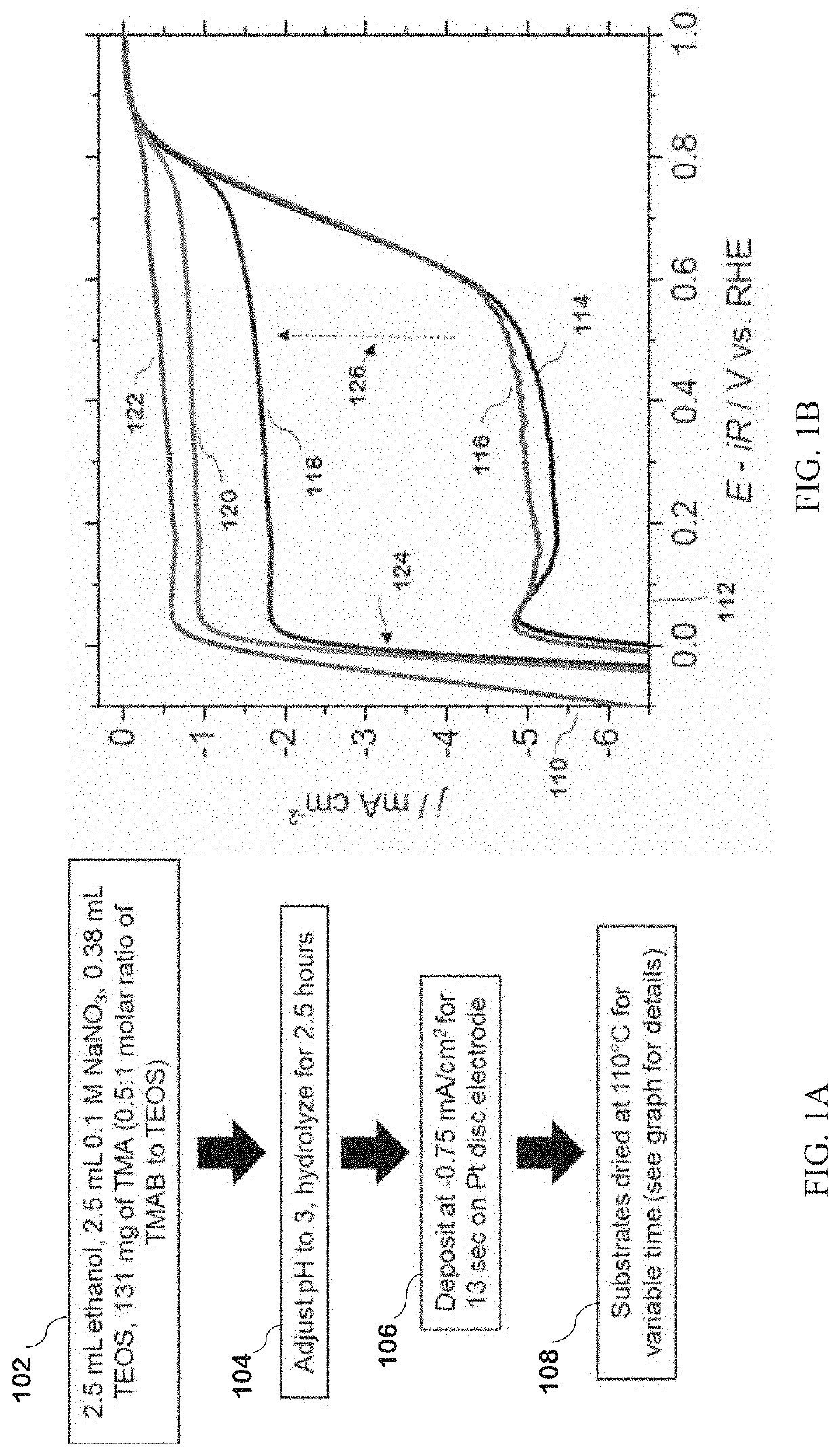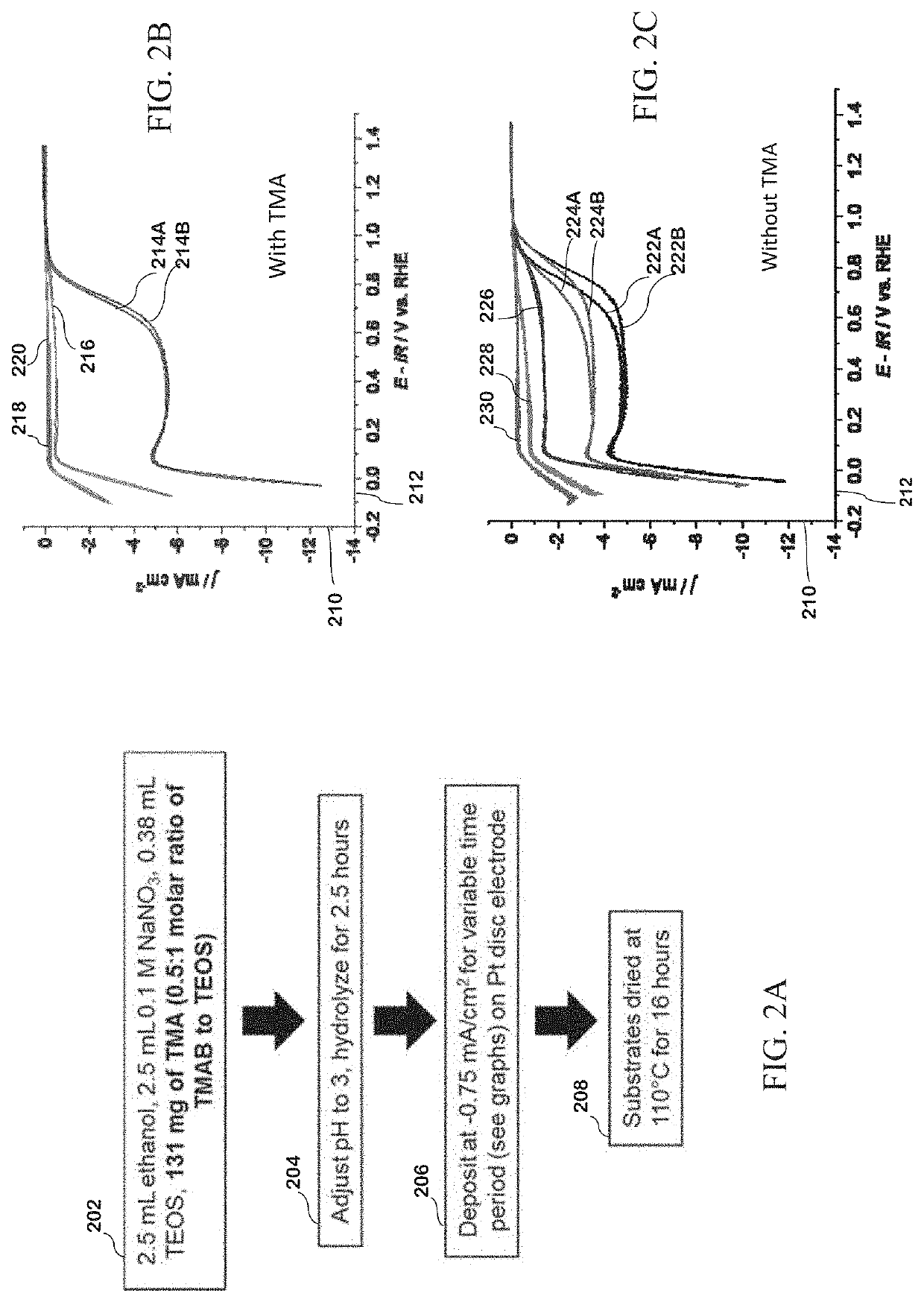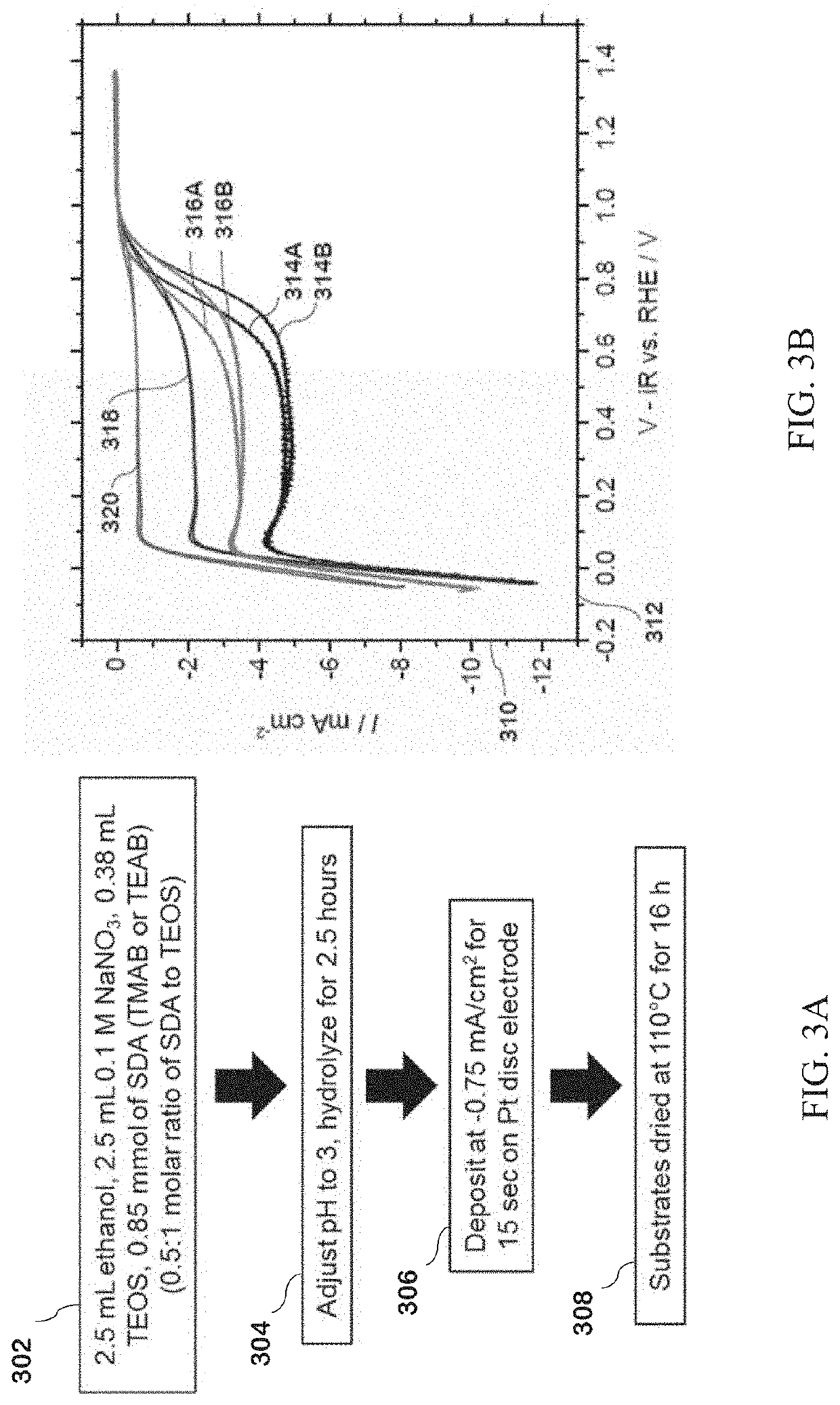Protection of metal surfaces for selective electrocatalysis and corrosion inhibition
a technology of selective electrocatalysis and metal surface, applied in the direction of electrodes, electrolytic inorganic material coatings, liquid/solution decomposition chemical coatings, etc., can solve the problems of shortening the usable and reducing the service life of the electrod
- Summary
- Abstract
- Description
- Claims
- Application Information
AI Technical Summary
Benefits of technology
Problems solved by technology
Method used
Image
Examples
example 1
emical Deposition-Preparation of Silica Microporous Layers on Model Pt Electrodes
[0148]TMA-SiO2 films were produced according to the following exemplary deposition methods. Processing times, temperatures and pHs useful for the disclosed method are not limited to the times, temperatures and pHs used in the examples herein.
[0149]An exemplary silica precursor solution was made with 131 mg of TMAB, 2.5 mL of 0.1 M NaNO3 (from a stock solution of 170 mg of NaNO3 in 20 mL of deionized water), 2.5 mL of ethanol, and 0.38 mL of TEOS. The pH of the solution was then adjusted to an acidic pH 3 with 0.1 M HCl and allowed to hydrolyze for 2.5 hours. A platinum electrode was then placed in the solution with a platinum wire counter electrode and a Hg / HgSO4 reference electrode, and a current density of −0.75 mA cm−2 was applied to the electrode for 13 seconds.
[0150]The electrode was washed with ethanol, dried by blowing air, and placed in a drying oven at 110° C. for 16 hours. Electrodes were also...
example 5
d Origin of Gas Permeability
[0209]Based on the behavior of TMA-SiO2 for blocking ORR, two differences in electrochemical behavior distinguish TMA-SiO2 and Group VI transition metal (Cr, Mo) oxide H2 / O2 recombination blocking layers: first, Group VI layers do not require heat treatment to block O2 diffusion. Second, Group VI layers completely inhibit all electrochemical activity with near-monolayer active regions. Together, both of these findings suggest that TMA-SiO2 controls diffusion in a physical manner based on the presence of micropores. If diffusion through the pores is the main mechanism of molecular passage through TMA-SiO2, the redox activities of molecules of different sizes should demonstrate an increasing trend of activity as the size of the molecule is reduced. Therefore, the activities of the H2 oxidation reaction (HOR), O2 reduction reaction (ORR), and ferricyanide reduction were compared.
[0210]As shown in FIG. 18A, TMA-SiO2-coated electrodes blocked 95% of ferricyani...
PUM
| Property | Measurement | Unit |
|---|---|---|
| Temperature | aaaaa | aaaaa |
| Temperature | aaaaa | aaaaa |
| Temperature | aaaaa | aaaaa |
Abstract
Description
Claims
Application Information
 Login to View More
Login to View More - R&D
- Intellectual Property
- Life Sciences
- Materials
- Tech Scout
- Unparalleled Data Quality
- Higher Quality Content
- 60% Fewer Hallucinations
Browse by: Latest US Patents, China's latest patents, Technical Efficacy Thesaurus, Application Domain, Technology Topic, Popular Technical Reports.
© 2025 PatSnap. All rights reserved.Legal|Privacy policy|Modern Slavery Act Transparency Statement|Sitemap|About US| Contact US: help@patsnap.com



